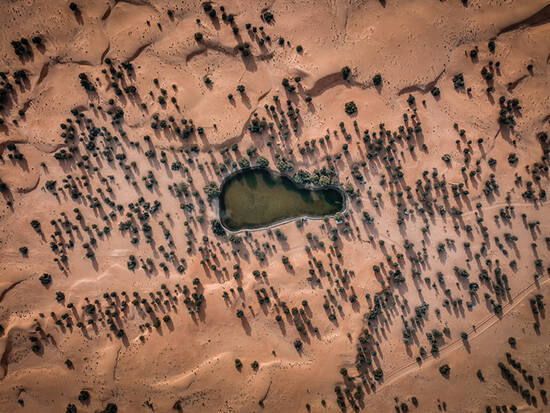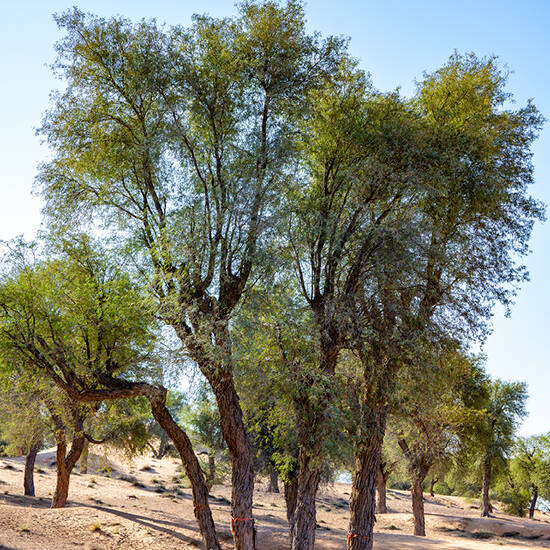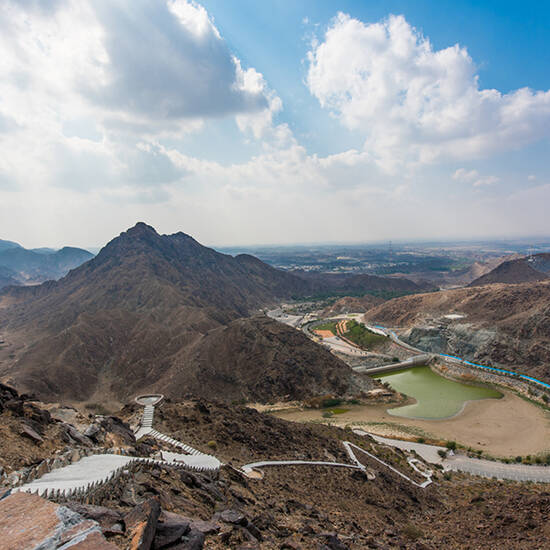Native plants of Dubai
It’s not only animals that contribute to the UAE’s rich biodiversity. The hot desert climate is ideal for a variety of plants, who thrive in defiance of the harsh desert conditions. It may seem like a minor miracle, but it's far from that!
In this blog, we’ll be talking about the native plants you can find across the UAE, both in the desert and across the country's rugged mountains. Join us on a tour of Dubai's biodiversity - you might be pleasantly surprised by what you find.
The desert climate
To set the scene, it’s important to understand the desert climate of Dubai. Out on the dunes, temperatures regularly transition from one extreme to the other - afternoons can be blisteringly hot, whereas nights can be extremely cool, making it a land of contrasts.
Peak temperatures regularly range between 46-49°c in the desert, with world record temperatures of 50°c+ regularly pushed during the summer.
However, the mercury falls to minus figures in the coldest months, making it a land of extremes. The lack of moisture and vegetation in the desert acts as a major contributing factor.
These fluctuations mean only the most adaptable of plants survive. There are plenty that do.


Common native plants
There are many common plants that thrive in Dubai's desert climate. Here are some of the more familiar.
The first, and arguably most popular, common UAE plant is the Date Palm. This tree is synonymous with Arabian culture because it’s where dates are harvested from – a small, delicious fruit enjoyed in many varieties across the Gulf. You’ll find bulks of delicious dates sat at the top of these trees, which can be found across local markets - and enjoyed with an Arabic Coffee on our desert safaris.
The Ghaf Tree holds great cultural significance, and can be seen across the UAE thriving in many habitats. The tree acts as a symbol of tolerance, owing to its ability to thrive in harsh desert conditions, continuing to grow even in times of drought. This embodies the spirit of the country, with its presence being a constant reminder of the power of resilience. From a practical perspective, the tree has many medicinal purposes, with its bark acting as a healing agent against scorpion and snake bites.
Special mentions also go to the Acacia and Aloe Vera plants – both of which thrive in the UAE's desert climate. The Acacia plant is a bright yellow plant, found across the Arabian Peninsula and also in parts of Africa. In the UAE, it’s commonly found in valleys, gravel plains and hills across the country, mostly towards the more mountainous east coast.
Aloe Vera plants are a very popular house plant, too. They are very easy to purchase and are ideal for inexperienced plant growers. Keep reading for a couple of handy tips about how to grow your own aloe vera plant at home.
Native plant conservation
The UAE Ministry for Climate Change and Environment (MOCCE) has invested in many environmentally focused projects, committed to building a circular economy. Whether it’s through investments in technology or supporting local businesses, local government is working towards creating an environmental economy which regenerates itself, supporting the growth and ongoing prosperity of native plants.
One way in which MOCCE has moved to conserve native plants is by investing in technology. One example of this is their investment in Responsive Drip Irrigation (RDI) systems, a sophisticated tool which delivers water directly to the roots of plants, turning water flows on and off dependent on the need of each plant. In a recent project, the RDI system successfully increased the number of date palm trees in Abu Dhabi by 30%, whilst using 30% less water and 50% less fertiliser.
In Fujairah, on the country’s east coast, a private business initiative funded the planting of thousands of Ghaf Trees. The entire initiative being privately funded is symbolic of the conservation culture that the UAE government is trying to create in the country - initiatives like this prove it's working
The Gheras programme is also actively working to protect local endangered plants and wildlife by promoting awareness and knowledge. A dedicated website to Gheras acts as a depository for information about the plants, including where they can be found across the country and how to aid their preservation. The overall goal of the programme is complete community engagement with preservation activities for endangered biodiversity.

Gardening native plants
Growing native plants at home is easy, and actively encouraged by local government. In fact, the UAE Ministry of Climate Change & Environment has released botanical guides about the benefits of growing plants at home, and step by step instructions of how to do so.
Ghaf Trees and Aloe Vera plants can both be grown at home. Seeds can easily be bought online or in local garden centres, as well as pre-grown Aloe Vera plants.
There is also a planting programme called Give a Ghaf, led by the United Nations. With over 75,000 Ghaf Tree seeds planted since its inception, the environment has undoubtedly benefitted from the generosity of the initiative.
FAQs
a) What is the national flower of the UAE?
The UAE’s national flower is the Tribulus Omanense. It’s a bright yellow flower with five vibrant petals, and can be spotted against the desert sand quite easily. The Tribulus Omanense has become the UAE national flower owing to its ability to thrive in the ideal climate of the country.
b) What is the most common plant in the UAE?
There are a variety of common plants in the UAE which thrive in the country’s unique climate. Common to both Dubai and the Gulf is the Date Palm. The Ghaf Tree is found in abundance across the UAE, and you’ll find Acacia and Aloe Vera in many corners of the country.
c) What is the ecological importance of Dubai's native plants?
Each native plant to Dubai has both an ecological and cultural significance. Ecologically, Dubai’s native plants contribute to the overall ecosystem of the country. Culturally, many of the popular plants mentioned in this blog act as symbols for the heritage of the UAE, with plants such as the Ghaf Tree acting as reflections of the country’s values and spirit.
d) Are there any endangered native plant species in Dubai?
Despite the efforts of the local government and various preservation initiatives, 8% of plant species in the UAE are considered critically endangered. A full list of endangered plants can be found on the UAE National Red List,
-
Pavonia Arabica: A coastal plant only recorded in Khor Fakkan, to the east of the country next to neighbouring Fujairah.
-
Grewia Tenax: This small shrub plant has only been recorded solely in Jebel Qitab and Wadi Hayl,
-
Gymnarrhena micrantha: Currently endangered across the entire UAE.
-
Wild populations of Olea europaea: Restricted to the Olive Highlands in the southern parts of the Hajar Mountains in the UAE